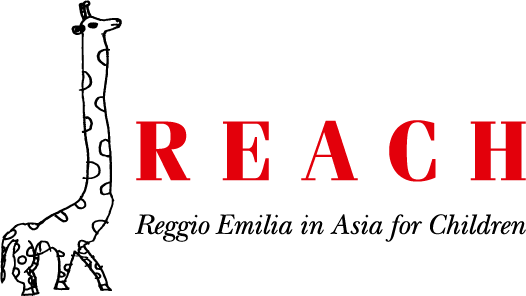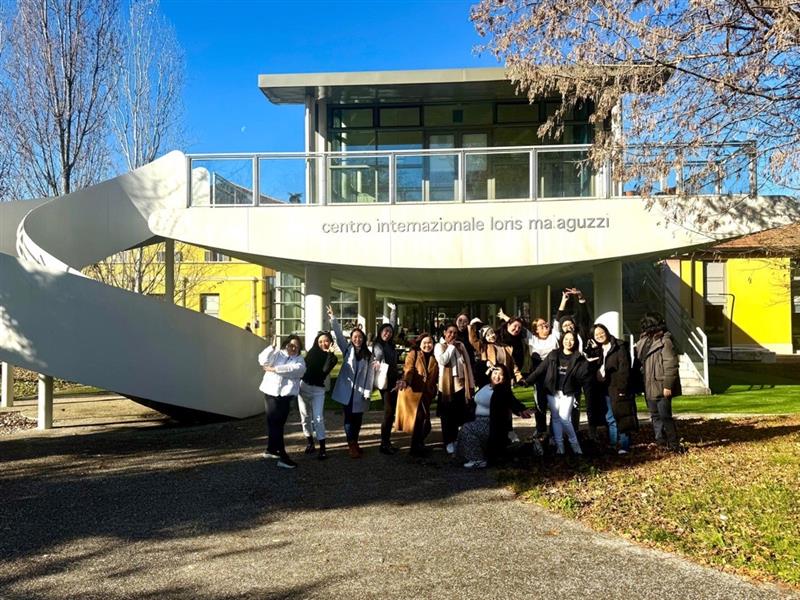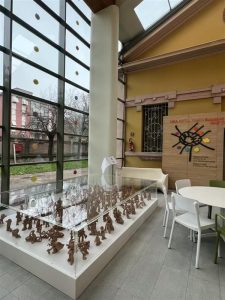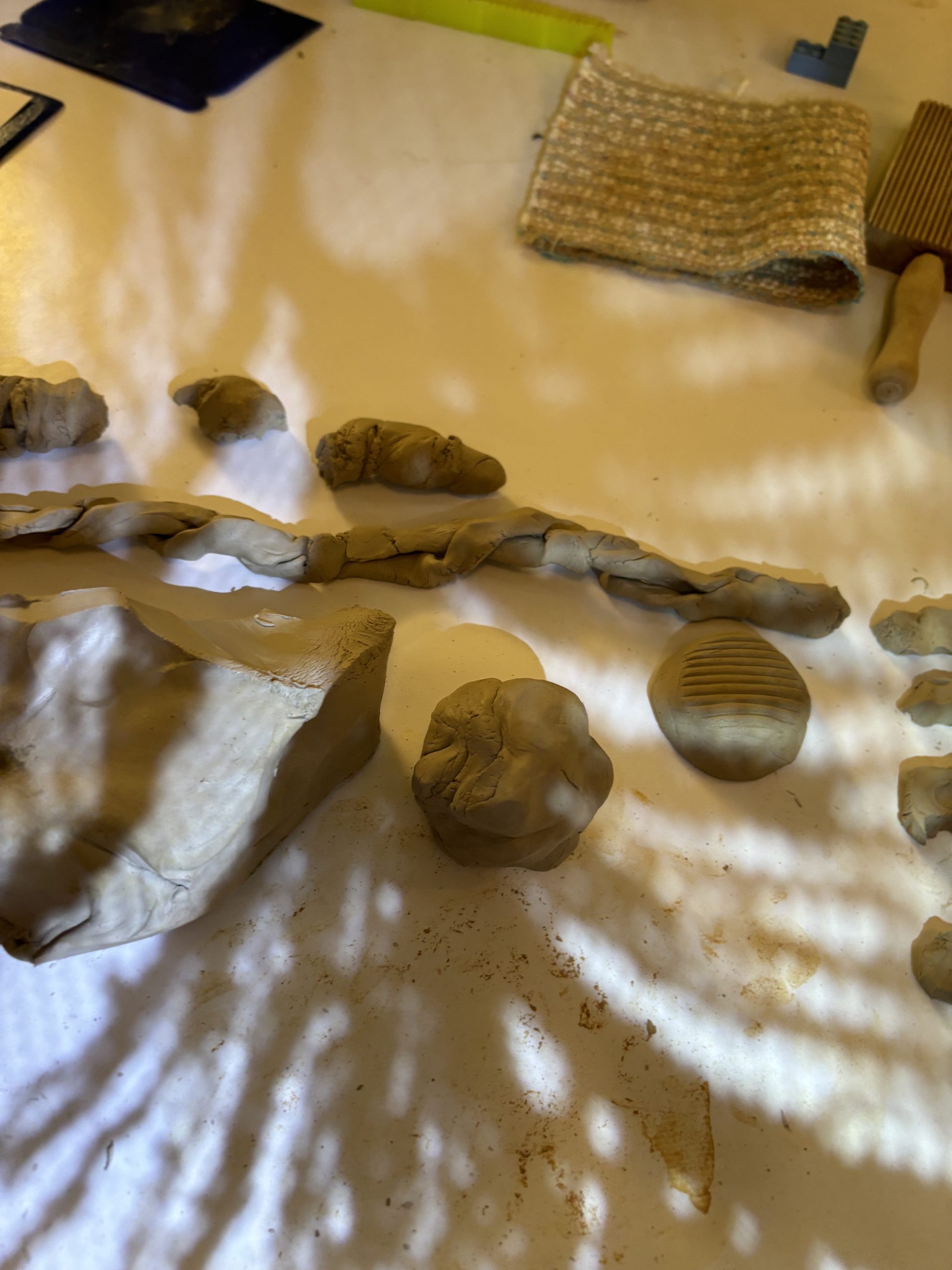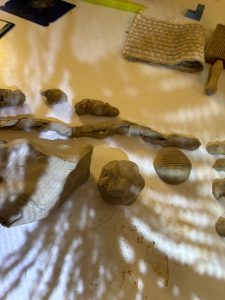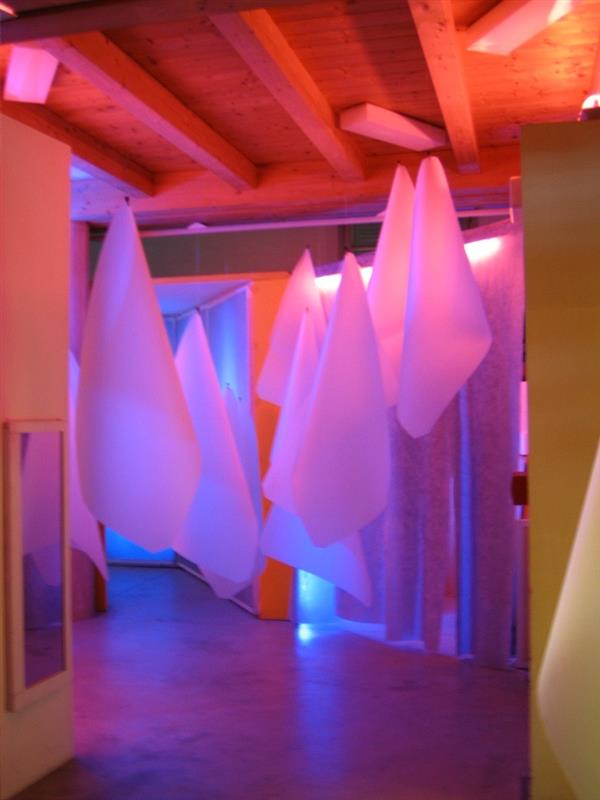Walking through the schools of Reggio Emilia, I was struck by the seamless connections between classrooms, ateliers, and the Piazza—living pathways of ideas, interactions, and shared experiences. These were not just physical connections but invitations for dialogue, collaboration, and community-building. Although I could not observe the children in action, their presence was deeply felt—traces of their thinking and creativity infused every corner. There was a careful balance between order and lived experiences: materials and resources were purposefully placed, yet the essence of the children—through their works, educators’ documentation, and shared constructions—remained vibrantly visible.
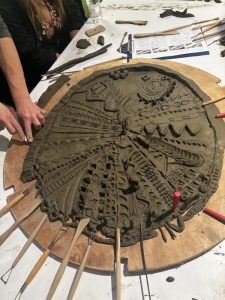
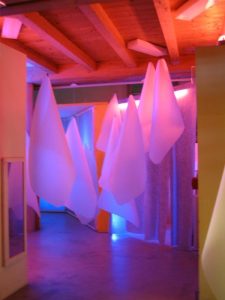
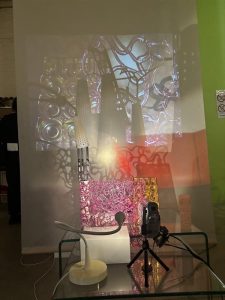
Every structure, artwork, and project reflected the children’s agency, guided by agreements they co-created. A profound sense of responsibility was evident, not just toward their work but also toward their peers. This ethos of collaboration extended across all spaces, with some projects even physically and conceptually crossing borders, weaving different environments into a cohesive tapestry of learning. This experience reaffirmed my belief that learning is not confined to individual spaces, but instead, flourishes in the relationships between people, places, and materials (Ceppi & Zini, 1998). These spaces serve as catalysts for ongoing discovery and deep connection.
Loris Malaguzzi’s words echoed in my mind: “Nothing without joy.” The joy of constructing knowledge together, of shaping spaces filled with meaning, was tangible everywhere. Collaboration extends beyond working alongside one another, it is an act of shared ownership, respect, and the courage to build something greater than oneself (Rinaldi, 2006).
Inspired by this, I envision creating shared projects in my own setting—structures that weave across learning areas, carrying the imprint of many hands and minds. By fostering this interconnectedness, we honour the child as a capable protagonist in their own learning journey (Edwards, Gandini, & Forman, 2012). More than ever, I am committed to designing spaces where children negotiate, problem-solve, and dream together—because, as I witnessed in Reggio Emilia, it is in these border crossings that the most beautiful learning unfolds.
Reflection by:
Chia Xin Er (Rexi)
Class Teacher
EtonHouse Garden School by the Bay
References
Ceppi, G., & Zini, M. (1998). Children, spaces, relations: Metaproject for an environment for young children. Reggio Children.
Edwards, C., Gandini, L., & Forman, G. (2012). The hundred languages of children: The Reggio Emilia experience in transformation (3rd ed.). Praeger.
Malaguzzi, L. (1998). History, ideas, and basic philosophy. In C. Edwards, L. Gandini, & G. Forman (Eds.), The hundred languages of children: The Reggio Emilia approach—Advanced reflections (pp. 49-97). Ablex.
Rinaldi, C. (2006). In dialogue with Reggio Emilia: Listening, researching, and learning. Routledge.
